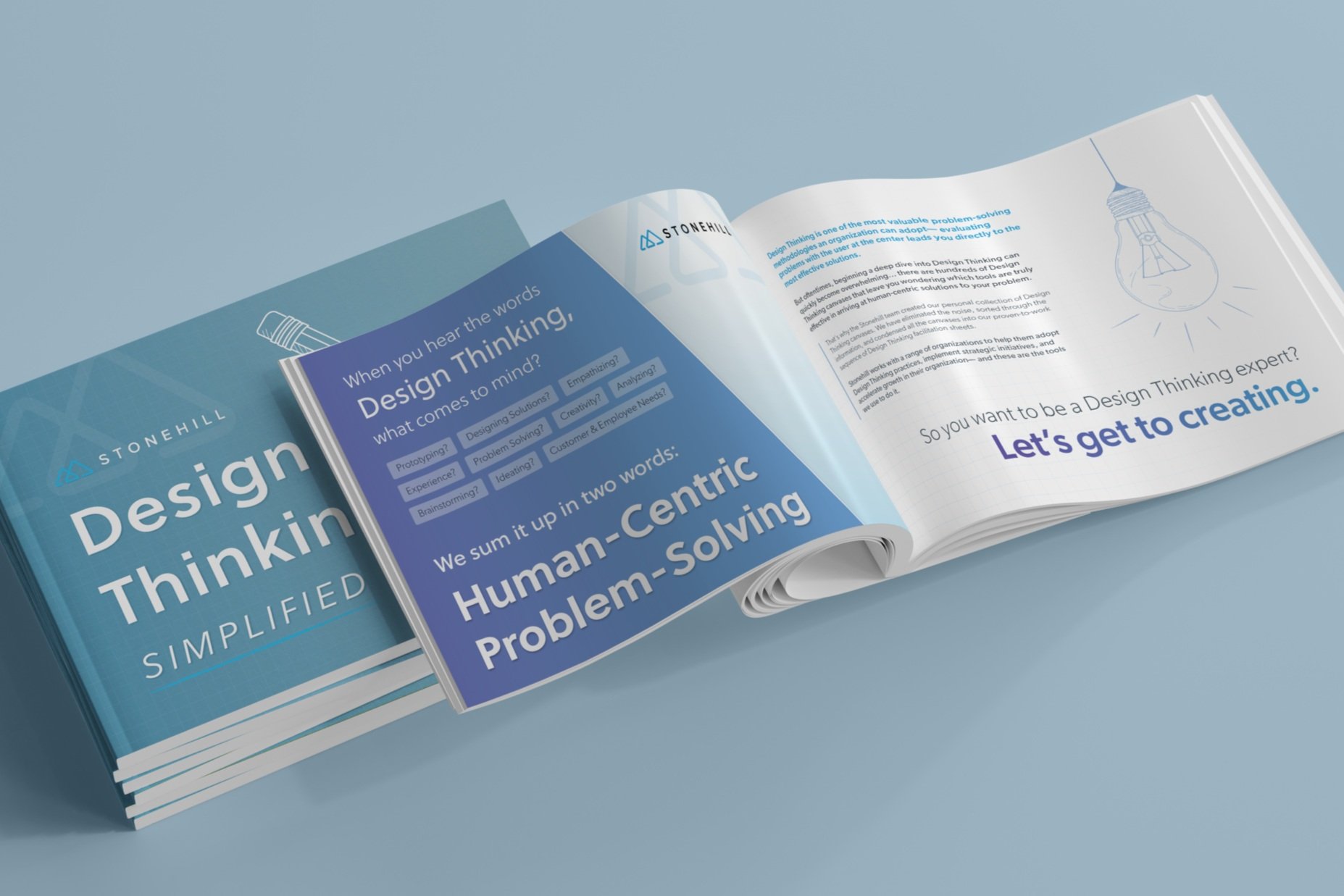Design Thinking: Align Your Team with the Human-Centric Problem Solving
Does this scenario sound familiar? You bring your team together to come up with a creative solution to a problem your customers are facing. But everyone has their own opinions about what to do, and the team can’t even agree on what the problem is you’re trying to solve. So, you keep having meetings and endless discussions trying to build a consensus, and in the end, everyone agrees to a less-than-stellar compromise just to move the project along.
This is the slow path to mediocrity, my friends. Fortunately, there is a better way.
Design Thinking
Design Thinking – or as we like to call it, human-centric problem solving – is one of the most valuable methodologies an organization can adopt to help efficiently and effectively create products, solutions, and user-experiences that your customers will love. And it can also bring your team together for more successful and fruitful collaborations!
The Design Thinking process helps you establish a common understanding among your team from the start. You work together to understand the customer, their interactions with your business, the problem they are facing, and determine a root cause for that problem. Once everyone is on the same page with these key components, it’s much easier to tackle the problem as a unified and aligned team.
Understand and Empathize with the Customer
Today’s analytics and big data technologies can enable you to get a more accurate picture of your customers than ever before. Many businesses think they have a good “gut” understanding of their customers and then the data reveals something very different. Utilize your customer data and take it a step further by forming detailed buyer personas. You want to walk in the shoes of your customer, see things from their perspective, and to do that, you need to understand how they think, feel, and behave.
Map out the Customer Journey
It’s also an eye-opening experience to map out your customers’ journey with your business – this includes every interaction from when they first hear of your company, throughout the buying process, and how you get them to come back for more. Again, walk in their shoes, go through the process as a customer yourself, and you’ll quickly be able to identify where your business is providing a great user experience, and where there is friction or frustration.
Define the Problem Your Customer is Facing
Identifying the actual problem is key to aligning your team. The problem may seem obvious at first, but once you start digging deeper, you may discover some surprising developments. Think about the problem you want to solve, but then explore further by using the four W’s:
Who is experiencing the issue?
What exactly is the problem?
When and Where is the problem most prevalent?
Why is this important to your business, and why is it important to the customer?
When forming your problem statement, follow this structure:
[User/Customer/Persona] needs a way to [verb] because [surprising insight].
Brainstorm Creative Solutions
Once the team has agreed on who the customer is and what specific challenge they are facing, they can begin the rapid ideation part of the Design Thinking process. Every idea at this stage is considered valuable and nothing is off the table. The group can then take the best features of each idea and work to create and refine a prototype.
And now your idea is off to the races. You can detail out an initiative to implement your idea and put together a sprint plan where everyone can focus on this specific project at once for faster turnaround.
Need Help Getting Started?
The Stonehill team has vast experience helping organizations use Design Thinking to create strategies and successfully implement the human-centric solutions. Your team can focus on their jobs while our team ensures the strategy becomes fully integrated throughout the enterprise.
We’ve also created a suite of tools to help you successfully navigate the Design Thinking process.
To learn from our team of Design Thinking experts and help maximize your team’s efforts, contact us today and get ready for a more productive tomorrow.

